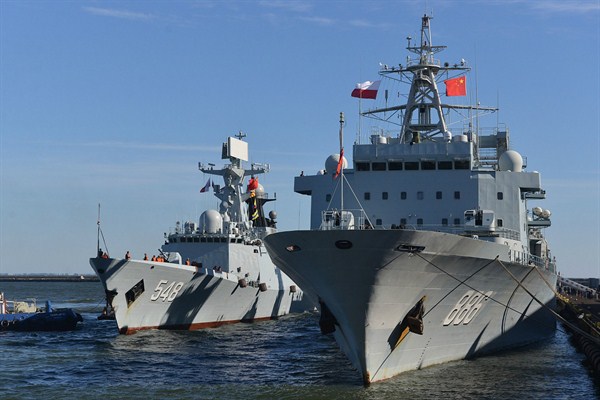Last week, Chinese engineers broke ground on what press accounts styled “China’s first overseas naval base” in Djibouti. That is a big deal. Djibouti lies in East Africa along the Bab el-Mandeb Strait, the waterway that connects the western Indian Ocean with the Red Sea. It also adjoins the patrol grounds for the Gulf of Aden counterpiracy mission, in which China’s navy has taken part since 2009. In short, it occupies strategic real estate.
China, however, will not be the lone occupant of the seaport. Djibouti is also home to other foreign logistics hubs: The Japan Maritime Self-Defense Force operates a facility there, for instance, as does the U.S. Navy. But does the Chinese installation mark a shift in Beijing’s naval outlook? Is Djibouti indeed an overseas naval base, the first in the “string of pearls” that has occasioned so much commentary over the past decade?
The image of a Chinese string of pearls—a putative network of naval bases or lesser port facilities encircling India from the sea and fettering New Delhi’s ambitions—has become a fixture in India’s strategic lexicon. The concept made its debut in 2005, when an Indian participant coined the phrase during a 2004 Booz Allen study for the U.S. Defense Department’s Office of Net Assessment (ONA). Distinguished Western and Indian commentators subsequently made it a staple of debates about China’s future naval posture in the Indian Ocean and how to respond to it.

